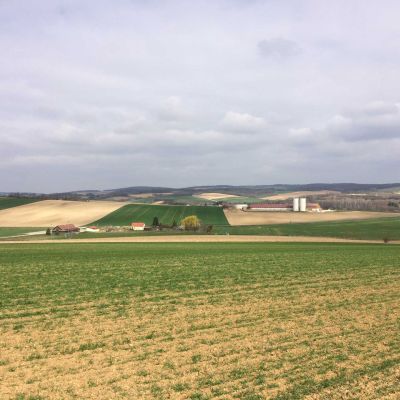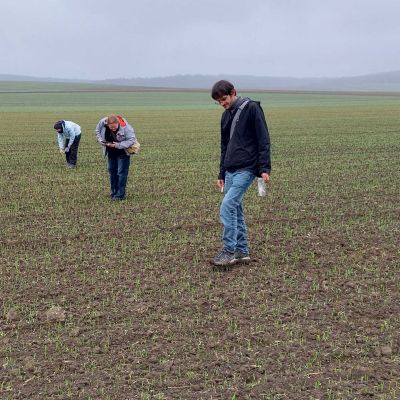AP01 Project management & internal communication (All)
AP02 Cataloguing of known archaeological sites (UWK & LSNÖ)
Systematic collection of existing information and basic data on individual LPC sites in the study region surrounding the central site of Asparn-Schletz (publications, grey literature, archaeological archives and find depots). Mapping and compilation of site recording forms.
AP03 Archaeological surveys (UWK & LSNÖ)
The survey work will deliver the biggest part of the information necessary for the archaeological analysis of the structure and development of the Schletz site cluster. We will survey the sites for surface finds, mainly with line walking, to verify the existence of sites and to get basic information on their size and dating. Selected sites will be surveyed more intensively. Citizen scientists (TG2/3) joining two archaeologists will conduct large parts of the survey work. Non-LPC finds will also be collected, but not analysed to the same degree.
AP04 Documentation and dating of archaeological finds (UWK & LSNÖ)
Existing finds (AP02) and new finds from the archaeological surveys (AP03) will in part be documented together with citizen scientists (TG2/3). Survey finds will be cleaned, processed for storage, classified in terms of raw material, typochronology and pottery style, statistically recorded in a database and – if necessary – depicted with photos or drawings. Some organic finds might be dated with 14C.
AP05 Dating of select human skeletal remains (NHM & UWK)
To ensure the age of the human remains analysed for Sr-isotope ratios and molecular genetics, we will sample a selection of them for AMS 14C-dating. In addition, Maria Teschler-Nicola will work further in person on the anthropological analysis of the human skeletal remains from Schletz.
AP06 Strontium isotope analysis of Schletz human skeletal remains (MUL & NHM)
Maria Teschler-Nicola will choose samples of all ~87 individual human remains with teeth and deliver them to Leoben. The Sr isotope ratio (87Sr/86Sr) of all sufficiently well-preserved remains will be determined. Where possible, not only the dental enamel, which gives a signature of the strontium available during childhood when the tooth was formed, but also the dentin within the tooth, will be sampled. The latter delivers an insight into the strontium intake of the last years when the person (or the tooth) was still alive.
AP07 Isoscape of Schletz settlement cluster (MUL & BOKU)
The definition of the detailed isoscape sampling strategy and area will be made in a joint workshop of all project partners. For the development of the local Sr isoscape map, pupils (TG1) will collect soil samples in the municipalities they live in and prepare them for analysis during a lab visit at BOKU Tulln. Additional samples will be taken and processed by university-trained scientists. The chemical analysis of the CS-sample solutions prepared at BOKU Tulln will be done at MUL in Leoben.
AP08 Evaluation of isotope data (MUL & BOKU)
We will prepare a local isoscape map and compare it with isotope values of human remains recovered from Schletz. Based on the geological diversity of the region it should be possible to identify, which individuals from the Schletz site might have grown up or lived on the site itself, which might have grown up or lived in the surrounding settlement cluster, and which most likely grew up or lived outside the settlement cluster.
AP09 Evaluation of archaeological data (UWK & LSNÖ)
AP10 Joint interpretation of archaeological & isotope data (All)
AP11 Citizen Science (All): TG1 - middle school students, TG2 - lay experts, TG 3 - general public
The middle school students (TG1) interact with the project throughout their whole second to fourth-year middle school careers. In the form of workshops and excursions, they first get to know the archaeological background. After receiving training, at the end of the third year, each student will independently extract and document an earth sample in her or his home village. In fourth year, they take part at sample processing with scientists at BOKU Tulln and will present their research results to the rest of their school in a museum event.
We will invite collectors (TG2) and interested individuals of the general public (TG3) to take part in archaeological surveys on sites in the Schletz settlement cluster and during finds processing. In the format of a special workshop, they will be a part of the data evaluation.













